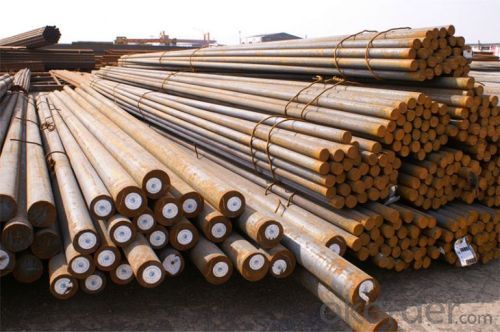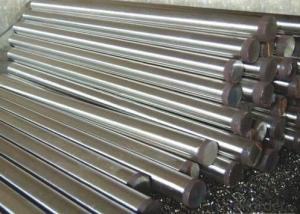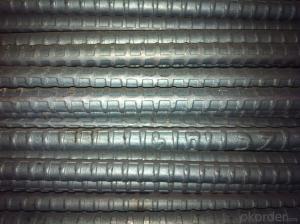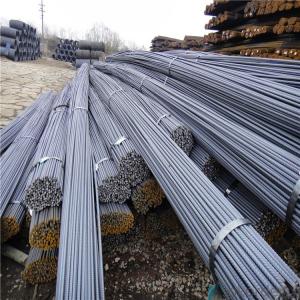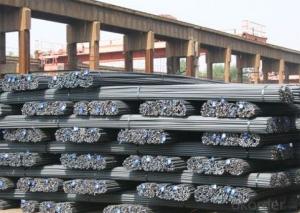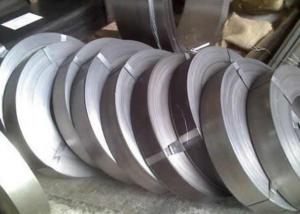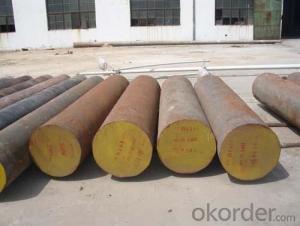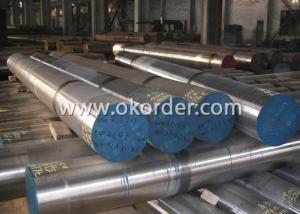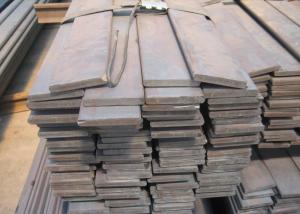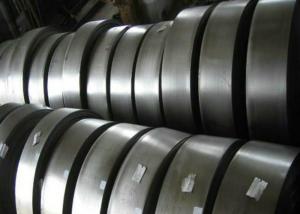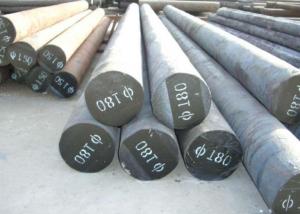Steel Rebar Dia 2mm -16mm Deformed Steel Bar
- Loading Port:
- China main port
- Payment Terms:
- TT OR LC
- Min Order Qty:
- 30 m.t.
- Supply Capability:
- 10000 m.t./month
OKorder Service Pledge
OKorder Financial Service
You Might Also Like
Specification
Steel Rebar Dia 2mm -16mm Deformed Steel Bar
Product Information:
Standard: ASTM, AISI, EN, DIN, JIS, GB
Diameter: 6mm-50mm
Length: 9m, 12m or as your requirement.
Technique: Hot rolled
| standard | GB | HRB335 HRB400 HRB400E HRB500 |
| USA | ASTM A615 GR40,GR60 | |
| UK | BS4449 GR460 | |
| Diameter in mm | 6,8,10, 12, 14, 16, 18, 20, 22, 25, 28, 32,40 | |
| Payment Terms | T/T or L/C | |
| Delivery Time | 15 to 30 days | |
| Usage | building and construction, | |
| residential building, office building, house, road, bridge, tunnel etc. | ||
Product Overviews:
| Product Name | Typical Grades | Diameter(mm) | Standard adopted |
| Carbon Steel | 20 (1020/S20C/C22) | Ø16-Ø300 | GB/SAE/JIS/DIN |
| 40 (1040/S40C/C40) | |||
| 45 (1045/S45C/C45) | |||
| Bearing Steel | GCr9 (51100/SUJ1) | Ø12-Ø250 | |
| GCr15 (52100/SUJ2/100Gr6) | |||
| GCr9SiMn (A485-Gr.1/SUJ3) | |||
| Cr-Mo Steel | 20Cr (5120/SCr420H/20Cr4) | Ø12-Ø250 | |
| 40Cr (5140/SCr440/41Cr4) | |||
| 42CrMo(4140/SCM440/42CrMo4) | |||
| Gear Steel | 20CrNiMo | Ø16-Ø600 | |
| 20CrMn(5115/SMnC420/20MnCr5) | |||
| 20CrNiMo(8620/SNCM220/20CrMiMo2) |
Product Show:
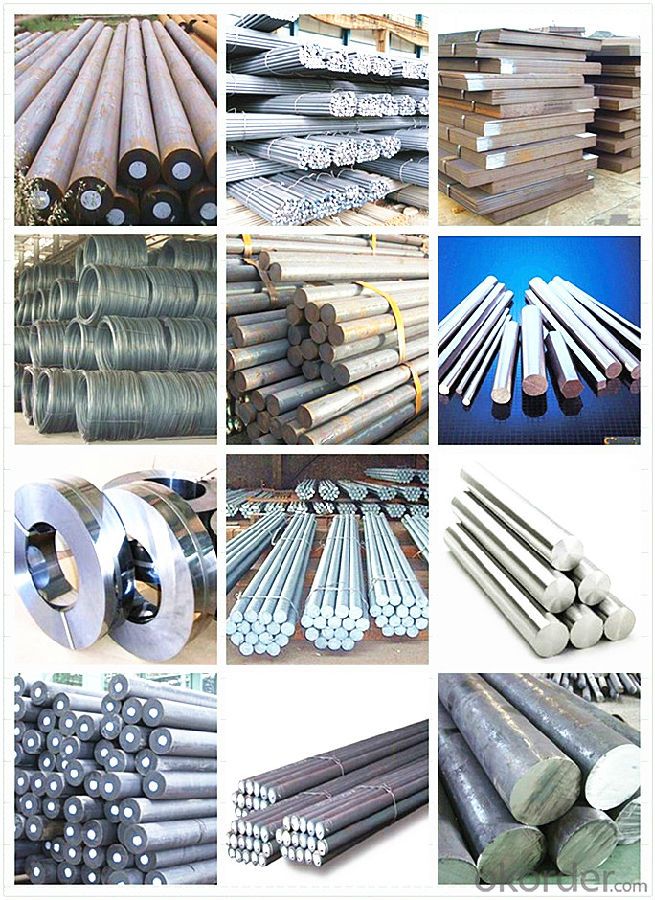
Our Advantages:
· Industry experience over 20 years.
· Shipment of goods -More than 70 countries worldwide.
· The most convenient transport and prompt delivery.
· Competitive price with best service.
· High technical production line with top quality products.
· High reputation based on best quality products.
With our experienced, enthusiastic and dynamic staffs, we assure to bring you the products with best quality, reasonable prices and good after-sales services under the motto: Friends First, Business After.
Communication, Experience, Expertise and Best efforts are our Promises to you.
- Q: How is special steel used in the aerospace industry?
- Special steel is used in the aerospace industry for various applications due to its exceptional properties. It is used to manufacture critical components such as aircraft engines, landing gear, and structural parts. The high strength-to-weight ratio, corrosion resistance, and heat resistance of special steel make it a preferred choice for withstanding extreme conditions and ensuring the safety and reliability of aerospace equipment.
- Q: How is special steel produced?
- Special steel is produced through a meticulous process known as alloying, where different metals are combined with iron to enhance its properties. The alloying elements are carefully selected and added to molten iron, followed by precise temperature control and cooling to form the desired steel composition. This process ensures that special steel possesses superior strength, hardness, corrosion resistance, and other unique characteristics required for specialized applications.
- Q: Can special steel be used for food processing equipment?
- Yes, special steel can be used for food processing equipment. Special steel, such as stainless steel, is often preferred in the food industry due to its hygienic properties, resistance to corrosion, and durability. It is commonly used in various food processing equipment such as mixers, slicers, cutters, and storage tanks to ensure safe and efficient food production.
- Q: What are the advantages of using special steel in industrial applications?
- Special steel offers several advantages in industrial applications: 1. Durability: Special steel is known for its exceptional strength and hardness, making it highly resistant to wear and tear. This durability allows it to withstand extreme conditions, such as high temperatures or corrosive environments. 2. Versatility: Special steel can be tailored to meet specific requirements, allowing for the production of a wide range of products. It can be alloyed with other metals or elements to enhance its properties, making it suitable for various industrial applications. 3. High performance: Special steel exhibits superior mechanical properties, including high tensile strength, toughness, and impact resistance. These characteristics make it ideal for applications that demand reliability and performance, such as machinery, tools, and equipment. 4. Resistance to corrosion: Special steel can be manufactured with corrosion-resistant properties, offering protection against rust and deterioration over time. This makes it suitable for applications exposed to moisture, chemicals, or harsh weather conditions. 5. Cost-effectiveness: Although special steel may have a higher initial cost compared to other materials, its long lifespan and low maintenance requirements make it cost-effective in the long run. Its durability and resistance to wear reduce the need for frequent replacements or repairs, resulting in reduced downtime and overall operational costs. In summary, the advantages of using special steel in industrial applications include durability, versatility, high performance, resistance to corrosion, and cost-effectiveness.
- Q: What are the advantages of using special steel in the marine sector?
- There are several advantages of using special steel in the marine sector. Firstly, special steel is known for its exceptional strength and durability. This is particularly important in the marine sector where structures are constantly exposed to harsh and corrosive conditions such as saltwater, extreme temperatures, and constant vibrations. Special steel has a high resistance to corrosion, making it an ideal choice for marine applications, as it can withstand the corrosive effects of seawater and prevent structural damage. Additionally, special steel offers excellent weldability, which is crucial in the construction of marine vessels and offshore structures. The ability to join steel components together seamlessly ensures the overall integrity and strength of the structure, reducing the risk of failures or accidents. Furthermore, special steel has a high fatigue strength, meaning it can withstand cyclic loading over long periods of time without experiencing failure. This is particularly important in the marine sector where structures are subjected to constant dynamic loads, such as waves and wind forces. The fatigue resistance of special steel ensures the longevity and reliability of marine structures, reducing maintenance costs and improving safety. Moreover, special steel offers design flexibility and versatility. It can be easily shaped and molded into various complex forms, allowing for innovative and efficient designs in marine structures and vessels. This flexibility also enables the optimization of weight, which is crucial in the marine sector to improve fuel efficiency and reduce emissions. Lastly, special steel is readily available and cost-effective. With advancements in manufacturing processes and technologies, special steel production has become more efficient and cost-effective, making it a viable choice for the marine sector. Its availability and affordability make it a preferred material for various marine applications. In conclusion, the advantages of using special steel in the marine sector include its exceptional strength and durability, resistance to corrosion, excellent weldability, high fatigue strength, design flexibility, and cost-effectiveness. These properties make special steel a reliable and efficient material for constructing marine structures, ensuring their longevity, safety, and operational efficiency.
- Q: What are the different production methods for special steel?
- There are several different production methods for special steel, each with its own unique advantages and characteristics. Some of the most common methods include: 1. Electric Arc Furnace (EAF): This method involves melting scrap steel in an electric arc furnace, where an electric current generates intense heat to melt the materials. EAF is popular for its flexibility, as it can produce a wide range of steel grades and alloys. 2. Basic Oxygen Furnace (BOF): In this process, molten iron from a blast furnace is combined with scrap steel and oxygen to remove impurities and adjust the carbon content. BOF is known for its high production capacity and ability to produce large quantities of steel. 3. Vacuum Induction Melting (VIM): VIM is a method used to produce high-quality and high-purity steel. It involves melting the raw materials in a vacuum environment to prevent contamination and achieve precise control over the alloy composition. 4. Continuous Casting: This method involves pouring molten steel into a water-cooled mold, which continuously produces solidified steel slabs, blooms, or billets. Continuous casting is known for its efficiency and ability to produce consistent and defect-free steel products. 5. Powder Metallurgy: This technique involves compacting and sintering metal powders to produce steel with specific properties. Powder metallurgy allows for the production of complex shapes, improved mechanical properties, and the incorporation of alloying elements that are challenging to achieve through traditional methods. 6. Additive Manufacturing (AM): Also known as 3D printing, AM is a relatively new method for producing special steel. It involves layer-by-layer deposition of metal powders, which are then fused together using heat or a laser. AM offers great design freedom, the ability to produce complex geometries, and the potential for customized steel parts. Each production method has its own advantages and limitations, and the choice depends on factors such as the desired steel properties, production volume, cost considerations, and the specific requirements of the end-use application.
- Q: What are the requirements for special steel used in industrial equipment manufacturing?
- The requirements for special steel used in industrial equipment manufacturing typically include high strength, durability, corrosion resistance, and the ability to withstand high temperatures and pressure. Additionally, the steel should have excellent machinability and weldability to facilitate the manufacturing process. These requirements ensure that the steel can withstand the demanding conditions and provide long-lasting performance in industrial equipment.
- Q: Is special steel recyclable?
- Yes, special steel is recyclable.
- Q: How does special steel contribute to the construction equipment industry?
- The construction equipment industry heavily relies on special steel to ensure the necessary strength, durability, and resistance to wear and tear in their heavy-duty equipment. Extreme conditions, including heavy loads, harsh environments, and constant use, demand the use of special steel alloys that are specifically designed to withstand these challenges and guarantee the equipment's longevity and reliability. One of the major contributions of special steel to the construction equipment industry lies in its impressive strength-to-weight ratio. This characteristic allows manufacturers to design and produce equipment that is both robust and lightweight. Implementing special steel in the construction of crucial equipment components such as chassis, booms, buckets, and blades enhances their load-carrying capacity and overall performance. Additionally, special steel offers exceptional corrosion resistance, which is a significant advantage in construction sites where equipment is exposed to moisture, chemicals, and other corrosive substances. By utilizing corrosion-resistant special steel alloys, manufacturers can extend the lifespan of construction equipment and reduce maintenance costs. Moreover, special steel plays a vital role in providing superior wear resistance. The abrasive materials encountered in construction sites, such as rocks, gravel, and concrete, can cause significant wear on equipment components. Special steel alloys with high hardness and wear resistance properties help minimize wear and prolong the service life of the equipment, reducing the need for frequent replacements and downtime. Furthermore, special steel enables the construction equipment industry to meet specific performance requirements. Various types of special steel alloys can be tailored to meet specific needs, such as impact resistance, high-temperature resistance, or low-temperature toughness. This versatility allows manufacturers to produce equipment that can efficiently operate in diverse conditions, ultimately enhancing the industry's overall productivity. In conclusion, special steel plays a crucial role in the construction equipment industry by providing the necessary strength, durability, resistance to wear and tear, and customization options. By incorporating special steel alloys into their manufacturing processes, equipment manufacturers can produce high-quality machinery that meets the demanding requirements of construction sites, thus improving productivity, safety, and efficiency within the industry.
- Q: What are the different methods of improving the strength of special steel?
- There exist various approaches that can be utilized to enhance the strength of special steel. One prevalent technique involves the process of alloying. By incorporating specific elements like manganese, chromium, or vanadium into the steel, its strength and hardness can be significantly augmented. These alloying elements form robust and stable compounds with the steel, thereby enhancing its overall strength. Another method entails heat treatment. This process entails subjecting the steel to controlled heating and cooling processes in order to modify its microstructure. For instance, quenching and tempering can be employed to increase the strength and hardness of the steel by creating a hardened martensitic structure. Additionally, precipitation hardening is a heat treatment technique that involves the formation of fine particles within the steel matrix, resulting in improved strength. Cold working is also a widely utilized technique for strengthening special steel. By subjecting the steel to plastic deformation at low temperatures, its grain structure becomes elongated, and dislocations are introduced. This leads to an increase in the strength and hardness of the steel. Furthermore, surface treatments can be implemented to enhance the strength of special steel. For instance, carburizing or nitriding can be utilized to introduce carbon or nitrogen into the surface layer of the steel, resulting in the formation of a hard and wear-resistant surface. Moreover, advancements in metallurgical technology have introduced techniques such as powder metallurgy and rapid solidification. These methods involve the production of steel with fine and homogeneous microstructures, leading to improved strength and performance. In summary, the methods for improving the strength of special steel encompass alloying, heat treatment, cold working, surface treatments, and advanced metallurgical technologies. These techniques can be customized to meet specific requirements, enabling the production of high-strength and high-performance steel for various applications.
Send your message to us
Steel Rebar Dia 2mm -16mm Deformed Steel Bar
- Loading Port:
- China main port
- Payment Terms:
- TT OR LC
- Min Order Qty:
- 30 m.t.
- Supply Capability:
- 10000 m.t./month
OKorder Service Pledge
OKorder Financial Service
Similar products
Hot products
Hot Searches
Related keywords



